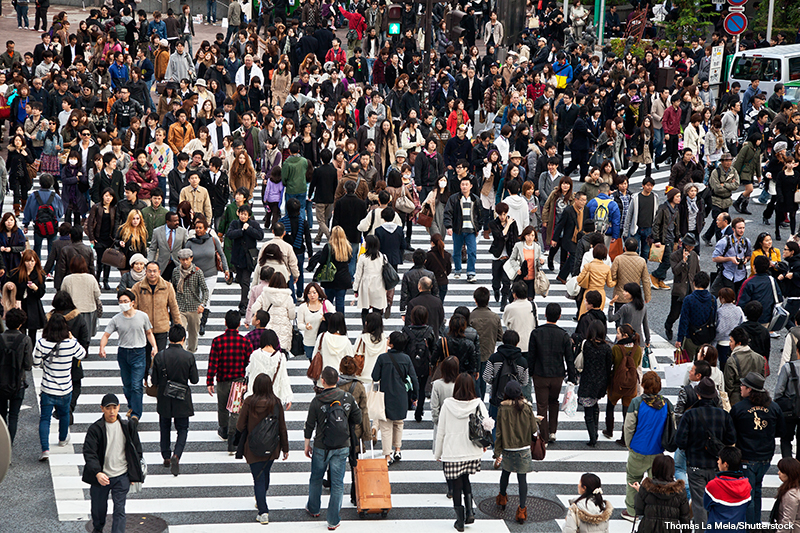
After World War II (1939-1945), many countries experienced a “baby boom.” As peace and stability returned to many post-war nations, people returned to work and started families. Japan was no exception. In 1945, Japan’s population was just over 71 million people. By the early 2000s, the population had nearly doubled to around 125 million. However, Japan’s population has been declining since 2008, with projections suggesting it could be halved by 2100. Many Japanese officials are concerned about the decline, believing it represents an important population crisis for the nation.
Birth Rate Statistics
The population decline in Japan stems from a decline in the birth rate. The birth rate is the number of babies born per one thousand people each year. Between 2000 and 2020, the birth rate fell from 9.5 births per 1000 women to 6.8 births per 1000 women. Consequently, as fewer babies are born, the average age in Japan increases. In 2000, the number of people in Japan aged 65 and over was 17.4 percent. In 2020, those 65 and over made up 28.5 percent of Japan’s total population.

Several factors are contributing to these population trends. Raising children is expensive, especially for low-income families, so Japanese families are choosing to have fewer children. Another reason is changing attitudes about marriage and family life. Marriage rates have declined steadily since the 1970s, and when people do get married, they marry later in life. Japanese couples often wait until their 30s or 40s to marry.
A Looming Crisis
Why are some Japanese officials calling this a crisis? The primary concerns are that a declining and aging population will adversely affect the economy. The Japanese workforce is shrinking. This limits the economy’s ability to grow and causes shortages of available workers. Small business owners are struggling to find successors. Other professions like teaching and caregiving have seen a reduction in their workforce. Towns and villages in rural areas also experience economic strain from the population decline. In some villages, the entire population is above the age of 65. Other villages have been totally abandoned.
The Japanese government has shifted some policies in an effort to halt this population decline. Government ministers have proposed a strategy called Population Vision 2100 to maintain Japan’s population above 80 million by the end of the century. This vision emphasizes the importance of population stabilization and economic strengthening strategies. It also suggests raising the total fertility rate and allowing more foreign workers into Japan to boost productivity. In 2023, Prime Minister Fumio Kishida’s administration introduced the Direction on Strategy for Children’s Future specifically to combat declining birth rates. This plan includes funding to help families, such as increased child allowances and economic assistance to pay for education costs.
However, funding such initiatives will be challenging. The Japanese government is struggling with large amounts of debt. Furthermore, time will tell how effective these measures will be and if new strategies are needed.
